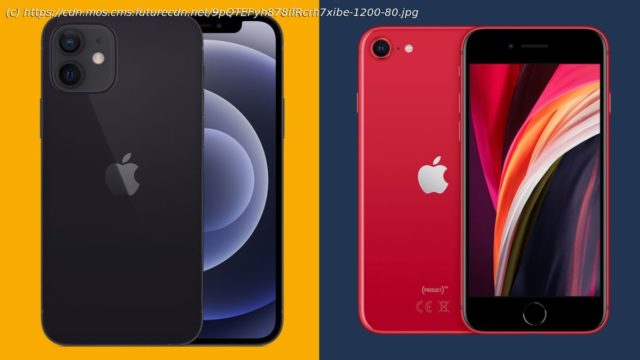Is Apple’s current flagship really twice the phone, or is the iPhone SE still an absolute bargain?
The iPhone 12 is Apple’s smartphone standard bearer for 2021, and the phone that will tick the most boxes for the most people. But it’s not for everyone. As we noted in our review, the iPhone 12 is more expensive than its predecessor the iPhone 11, which was hardly cheap itself. There are some, too, who will lament Apple’s continued move towards ever larger displays. For those who are operating on a strict budget, or who simply prefer the compact iPhone designs of yesteryear, there’s the iPhone SE (2020). Having launched in the same year as the iPhone 12, it’s scarcely any older, and it’s still being offered as new. Here’s how this odd smartphone couple match up. The iPhone 12 landed in shops on October 23,2020. Prices kicked off at $799 / £799 / AU$1,349 for the 64GB model, and progressed up to $849 / £849 / AU$1,429 for 128GB and $949 / £949 / AU$1,599 for 256GB. The 64GB iPhone SE 2020 launched on April 24, 2020 for $399 / £419 / AU$749. That price increases to $449 / £469 / AU$829 for 128GB and $549 / £569 / AU$999 for 256GB. It’s still available as new from Apple, with the only change being a slightly reduced £399 / £449 / £549 price tag for UK customers. If you were unfamiliar with Apple’s work, you would never guess that these two phones were released in the same year and by the same company. That’s because their designs are from completely different eras. The iPhone SE (2020) is externally nigh-on identical to the 2017 iPhone 8, which makes it seem dated. When you consider that the basic blueprint for the shape, size and lay-out of this phone was laid down with the 2014 iPhone 6, it seems positively ancient. Not that the SE feels anything but classy in the hand. With glass to the front and rear and a rounded aluminum chassis, and with Apple’s peerless premium finish, it feels better than any other $399 / £399 smartphone on the market. The biggest appeal of this design is its compact dimensions. At 138.4 x 67.3 x 7.3mm and 148g, the iPhone SE can be wielded in one hand, and it sits comfortably in even small pockets when not in use. The iPhone 12 is an entirely different kettle of fish. At 146.7 x 71.5 x 7.4mm and 164g it’s bigger than the iPhone SE in every way. It’s proportionally taller, too, and its flat-edged industrial design comes from a completely different school of though. It’s more iPhone 5 than iPhone 6, but with a more modern twist. Around front, the iPhone 12’s all-screen design pushes back the chunky bezels of the iPhone SE, with an 86% screen-to-body ratio compared to the SE’s 65.4%. This has necessitated the dropping of the iconic Touch ID-imbued Home button, with a Face ID notch eating into the top of the screen by way of a replacement. Both biometric systems present fast, secure and reliable ways to unlock your phone and authenticate payments. But Touch ID feels freshly relevant in a mask-wearing world, where Face ID has come to struggle. The iPhone 12 is the hardier phone of the two, with a toughened nano-crystalline Ceramic Shield up front for four times the screen protection. It also benefits from an IP68 rating, compared to the iPhone SE’s IP67 rating, which means it can be immersed in far deeper water without issue. In a nutshell, the iPhone 12 design is much fresher than the tired old iPhone SE, but the latter phone is more comfortable to hold and to lug around. The old ones aren’t always the best, but they’re often more comfortable. The reason the iPhone 12 is both bigger and proportionally longer than the iPhone SE (2020) is simple: its display is bigger and proportionally longer. At 6.1-inches and 19.5:9, the iPhone 12’s display is way better suited to widescreen landscape content (i.e. videos and games) than the 4.7-inch 16:9 iPhone SE. You could make a case against the iPhone 12 for its intrusive notch, but it’s still giving you way more space to play with. It’s not just a size thing either. The iPhone 12 screen is better than the iPhone SE’s in every way, with a higher 1170 x 2532 resolution (versus 750 x 1334) for a sharper 460 ppi pixel density (versus 326 ppi).
Home
United States
USA — software iPhone 12 vs iPhone SE (2020): double the price, double the phone?






